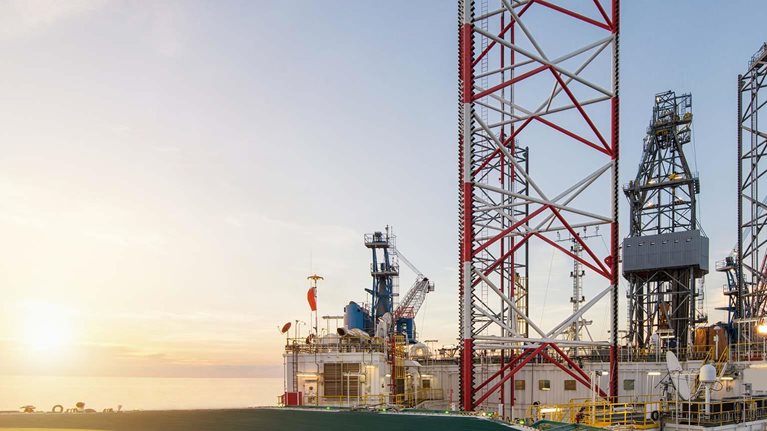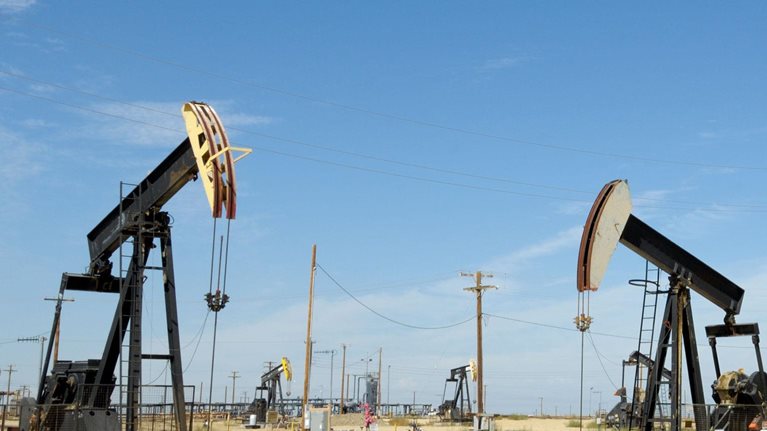Active use of technology to capture new frontiers and drive productivity is not new to the oil and gas industry. In fact, we would argue that the oil and gas sector has been at the forefront of several significant technological advancements in the past, from supercomputing techniques for reservoir modeling to seismic and 3-D imaging for drilling and project departments.
Stay current on your favorite topics
In a time of unprecedented technology advancements, the physical capacities and cognitive abilities of the oil and gas industry are leaping by greater bounds every year. For example, a number of drilling advancements at both the rig and downhole levels have helped producers reach targets previously impossible to consider. However, the key to unlocking full digital transformation across the oil and gas sector will involve both soft and hard automation technologies as well as require more nimble work practices. We have seen that for a business like the typical well organization, completion of tasks that used to require months might soon be possible in mere days or weeks.
If this sounds unnerving, it’s because it is, especially for oil and gas companies that have already undertaken significant cost reductions in recent years. But along with challenges of implementing digital change, there are also enormous opportunities for substantial cost reductions, better safety, and sustained productivity improvement.
Why the well organization?
Well construction and intervention accounts for typically 40 percent—and often as much as 70 percent—of an oil or gas company’s capital spending. For this and other reasons, that area is widely recognized as the most critical and complex operation to “get right” in the entire oil and gas value chain (Exhibit 1). Furthermore, drilling and well activities are highly complex, happening in an environment with significant health and safety risks and often involving an intricate web of interfaces in which ten or more suppliers are working together to deliver a single well.

The good news is that emerging technologies will bring significant opportunities to improve all aspects of the operating model for wells, from streamlining core processes to strengthening frontline capabilities to improving the overall organizational model, including the all-important supplier interface.
These new technologies will require investment, but the significant operational changes that most oil companies undertook during the 2014 to 2016 price declines have positioned them well for adopting the coming technological advancements. For example, well spending across most basins is now 40 to 50 percent lower than the 2013 and 2014 levels, and approximately one-third of that spending reduction is attributable to lower drilling activity in general—in exploration, in particular (Exhibit 2). Another one-third of the well-spending reduction is attributable to the lower unit prices resulting from overcapacity in many supply categories in recent years: notably, offshore-rig rates in the first quarter of 2018 are nearly half of their 2013 highs.

The remaining one-third of cost reduction, equivalent to approximately a 15 percent decline in well-related costs, is attributable to operating-model adjustments and real productivity improvements in well delivery. How did most operators achieve this? In some cases, operators have trimmed staff to match lower activity levels. Other operators have simplified core processes to move prospects through the funnel faster. Some have also simplified well designs and standardized design choices for a larger portion of their well portfolio. And a few have successfully improved frontline practices and capabilities to realize real operational improvements.

Rebooting your stalled digital transformation in oil and gas
In total, these tweaks have the average well organization in a position to adopt digital change at scale and perform the corresponding changes required for a digitally enabled operating model. The recent resurgence in drilling spending will only make this next wave of digital transformation ever more imminent.
Productivity, cost, and safety upsides to capture
With a stable backbone of streamlined operations in place, well organizations are now in position to benefit from the enhanced productivity that digital- and analytics-driven change can bring. The long-run potential benefits are numerous and exciting in their ability to evolve productivity, safety, and cost discipline dramatically. From our discussions with clients and the work of our own growing data-science team, we see several examples of emerging transformation improvements, such as the following:
- Improved health, safety, and environmental (HSE) performance. The trajectory of safety-record improvements is flattening, and some operators are even facing a slight weakening of safety performance over the past year. This is where advanced analytics can help. Cognitive HSE analysis uses advanced analytics to identify risky behaviors and choices based on safety records built over many years. Companies can use those pointers to predict HSE events for planned and ongoing activities. Advances in robotics will also improve safety through the replacement of human operators in hazardous environments, putting people out of harm’s way.
- Better subsurface planning. Advanced analytics supported by new capabilities—like more connected data platforms—can improve subsurface activities like well placement, well design, and full-field development planning. In many ways, this approach lays a foundation for significantly lower costs and better well productivity.
- Automation of the prospect-maturation process. Using advanced analytics and digital ways of working can reduce the numerous interfaces and handovers among functions and individuals. Maturation of an average well prospect, especially an offshore one, from the “define” to “execute” stage in the stage-gate process can take weeks or even months. It can consume between 3,000 and 6,000 person-hours for offshore wells—and often similar numbers for onshore well campaigns—before actual drilling starts.
- Higher offshore operational performance. Offshore operational performance has still not materially improved the way onshore cases have, although modest improvements (and a few cases of substantial improvements) have been observed across most basins. Cases of using advanced-analytics techniques, like natural language processing, to improve the drilling operations are emerging. For example, harnessing previously unconnected or manualized pattern spotting can strengthen the predictive power of monitors to anticipate unexpected downhole events, improve well placements, and foresee equipment failures.
- Faster, more efficient, and lower-cost supply. Digitally enabled logistics planning and procurement execution can help ensure that trucks and vessels show up on time and with the right equipment. Furthermore, clients are already digitally monitoring suppliers to ensure that the right materials are delivered on time and the price charged matches that in the contract documents.
- Revived technology developments. Technology advancements in several areas have slowed or even halted in recent years due to cost cutting. There is now potential for digital and analytics transformation to free up budget for more R&D and accelerate the process of developing new technologies. For well organizations, innovative approaches, such as increased rig mechanization and robotization, are hot topics being explored to improve safety and performance on the rig.
- Reconsidered business models. Frequent aspirations around a digitally enabled workforce is its ability to support more cross-functional teams, break up silos, and harness more institutional knowledge. For example, a more connected cross-functional team can ensure that engineering covers appropriate risk scenarios and that contingency plans are logical and constructed to avoid decision paralysis. Similarly, a connected team can help develop talent without losing the knowledge and experience required in key positions by providing exposure to different roles in an efficient manner.
To summarize the slate of future possibilities, Exhibit 3 shows how one might envision an end-to-end, digitally enabled onshore drilling and well-delivery setup.

In short, there is still significant unlocked potential for finding real and sustainable productivity improvements, both onshore and offshore. Some industry executives even see the possibility of an additional 30 to 40 percent improvement in the next few years.
Common traits of the next-generation operating model
These improvements paint a vision of an updated operating model for wells, one informed by advanced data tools that uses digital ways of working to break functional and organizational siloes. The core of this operating model rests on better deployment of cross-functional teams that operate with agile methods. Such teams can produce quick pilots that either succeed and get scaled or fail quickly and supply learnings to build on in the next attempt.
Would you like to learn more about our Oil & Gas Practice?
Managing the organizational changes required when adopting new technology and processes is never easy in the beginning. While we do not believe in a one-size-fits-all setup, we expect that digital methods and tools can progress most well businesses in a similar direction, with the goal of realizing three new character traits for the organization:
- More centralized yet agile ways of working. Most of the technology drivers discussed point to a higher degree of centralization inside well organizations. For example, increased standardization will be easier with central government and execution of design. Furthermore, agile delivery models will require more colocated teams, and remote operations technologies will drive us toward establishing control centers in one or a few locations. However, some operators are reversing their trends and moving to decentralization in other business areas. This might be likely when assets are higher risk, economies of scale are not applicable, and specific expertise in complex assets is scarce. Nonetheless, most global trends are still pointing toward a broader shift to selective centralization. As a result, a hybrid (or combined) model is evolving. It has a strong central core that holds the data platforms, governs the ecosystem of partners, and maintains the standards. The model also has an agile delivery system with smaller, more decentralized teams at the execution end.
- Simplified and automated core work processes. Robotic process automation can take on 80 percent, or even more, of the tasks executed today. An example currently in testing is parametric cost estimation of the well prospect fueled by a digital-twin-design tool that comes close to eradicating the need for manual costing completely. The same effects are potentially possible on other activities, such as logistics planning and design simulation. The potential for greater speed and accuracy is tantalizing. Furthermore, new tools can unlock and process vast amounts of historic and real-time data to improve decision-making processes. Leading operators are already using predictive tools and data-driven approaches for key activities, such as well placement, downhole “geosteering,” and setting operational parameters, such as rate of penetration and mud and chemical usage. Ultimately, automation and robotics will challenge the current status quo of the work performed and its management.
- New talent profiles and capabilities. With current labor-intensive tasks being automated, new capabilities in addition to the traditional disciplines are necessary. Future well organizations will build capabilities in areas such as agile coaching, data science, and advanced-tech stack planning. Changing interfaces with suppliers will require evolved tasks and profiles. These changes are expected to affect all groups inside well organizations and are likely to progress quickly, possibly within the next few years. New capabilities can also lead to fulfillment and delivery of more ambitious targets.
What to do now
As operators start to contemplate the implications of the coming changes on drilling, we believe it is important to engage more closely with the ecosystem of partners, including drilling-services companies, new-technology companies, and digital start-ups, to adapt to the disruptive trends. There are a lot of learning and new ideas to tap into by engaging a broader network of suppliers than those engaged through normal procurement practices. We also believe many operators will have to step up their game in technology innovation by testing and deploying new technologies and investing more on R&D. Last, we are firm believers in adopting more agile ways of working to transform operations and organizational models as well as manage change. This will lead to fit-for-purpose operating models for individual operators in the next generation.
Significant value is now on the table for the players who are ready to engage in digital transformation, and many of these substantial changes are likely to unfold quickly, ushered in by the pace of technological progress alone. Industry leaders will have to align to these trends, socialize the vision across the organization, and develop a comprehensive strategy to adopt these changes swiftly. There is no single silver bullet, but an early start to detailing the full vision is a valuable place to begin.


